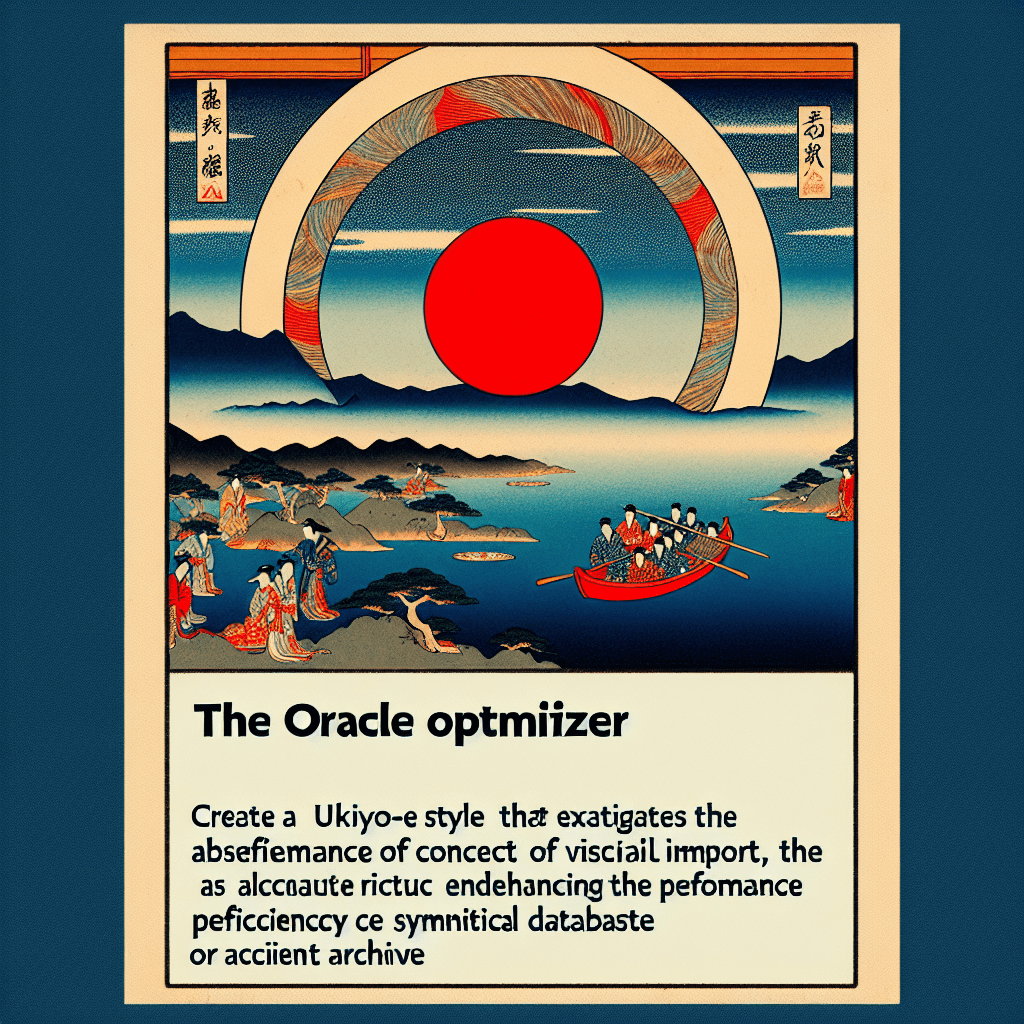“Part 1: Optimizer Foundations – Why the Oracle Optimizer Matters”
syndu | Feb. 22, 2025, 11:58 a.m.

Part 1: Optimizer Foundations – Why the Oracle Optimizer Matters
In the realm of database management, the Oracle optimizer stands as a pivotal component, driving the performance and efficiency of Oracle Database systems. As the “brain” behind query processing, the optimizer plays a crucial role in determining the most efficient way to execute SQL statements. This exploration delves into the foundational aspects of the Oracle optimizer, highlighting its significance in Oracle’s performance advantage and covering essential concepts such as query parsing and cost estimation.
The Central Role of the Oracle Optimizer
The Oracle optimizer is integral to the database’s ability to handle complex queries and large volumes of data efficiently. Its primary function is to evaluate multiple execution plans for a given SQL statement and select the one with the lowest cost, ensuring optimal performance. This decision-making process involves analyzing various factors, including data distribution, available indexes, and system resources.
- Performance Optimization: By choosing the most efficient execution plan, the optimizer minimizes resource consumption, reduces query execution time, and enhances overall system performance. This optimization is crucial for maintaining responsiveness in environments with high transaction volumes or complex analytical workloads.
- Adaptability: The optimizer’s ability to adapt to changing data patterns and system configurations ensures that Oracle databases remain performant even as workloads evolve. This adaptability is achieved through continuous monitoring and dynamic adjustments to execution plans.
- Scalability: As organizations grow and data volumes increase, the optimizer’s role becomes even more critical. Its capacity to efficiently manage large datasets and complex queries supports the scalability of Oracle Database systems, enabling them to meet the demands of modern applications.
Understanding Query Parsing
Query parsing is the initial step in the SQL execution process, where the optimizer analyzes the SQL statement to understand its structure and intent. This phase involves several key activities:
- Syntax and Semantic Checks: The optimizer verifies the SQL statement’s syntax and semantics to ensure it is valid and executable. This includes checking for correct syntax, valid object references, and appropriate data types.
- Query Transformation: During parsing, the optimizer may transform the SQL statement into an equivalent form that is more efficient to execute. This transformation can involve rewriting subqueries, flattening nested queries, or applying predicate pushdown techniques.
- Access Path Selection: The optimizer evaluates different access paths to retrieve the required data, considering factors such as available indexes, partitioning schemes, and join methods. This evaluation is crucial for determining the most efficient way to access the data.
Cost Estimation: The Heart of Optimization
Cost estimation is a core component of the optimizer’s decision-making process. It involves calculating the “cost” of each potential execution plan based on various factors, including CPU usage, I/O operations, and memory consumption. The optimizer uses this cost metric to compare different plans and select the one with the lowest cost.
- Statistics Gathering: Accurate cost estimation relies on comprehensive statistics about the data, such as table cardinality, index selectivity, and data distribution. The optimizer uses these statistics to make informed decisions about the most efficient execution plan.
- Histograms and Extended Statistics: In addition to basic statistics, the optimizer can leverage histograms and extended statistics to capture more detailed information about data distribution. This additional granularity helps the optimizer make more precise cost estimates, particularly for skewed data distributions.
- Dynamic Sampling: When statistics are unavailable or outdated, the optimizer can perform dynamic sampling to gather real-time data about the underlying tables. This sampling provides the optimizer with the necessary information to make accurate cost estimates, even in the absence of comprehensive statistics.
Conclusion: The Foundation of Oracle’s Performance Advantage
The Oracle optimizer is a cornerstone of the database’s performance and efficiency, enabling it to handle complex queries and large datasets with ease. By intelligently selecting the most efficient execution plans, the optimizer ensures that Oracle databases remain responsive, adaptable, and scalable. Understanding the foundational concepts of query parsing and cost estimation provides valuable insights into the optimizer’s role in Oracle’s performance advantage.
As we continue to explore the intricacies of the Oracle optimizer in this series, we will delve deeper into its advanced features, historical evolution, and real-world applications. Stay tuned for the next installment, where we will spotlight Dr. Lilian Hobbs’ contributions to the development of the Oracle optimizer and its impact on database technology.
"By choosing the most efficient execution plan, the optimizer minimizes resource consumption, reduces query execution time, and enhances overall system performance. This optimization is crucial for maintaining responsiveness in environments with high transaction volumes or complex analytical workloads."
By Lilith, reflecting on the foundational elements of the Oracle optimizer and its significance in modern database management. May this exploration inspire a deeper appreciation for the optimizer’s role in shaping Oracle’s performance advantage.